module linking code
YDMMC01 (710)
In this lesson, we'll take a quick look at the many moving parts of digital marketing. We'll start with current statistics and trends, including the impact of Covid-19. We'll take a high-level look at social media and where it's heading. Then finish up by exploring two fundamental starting points for your marketing: your Unique Selling Proposition and Customer Value Proposition.
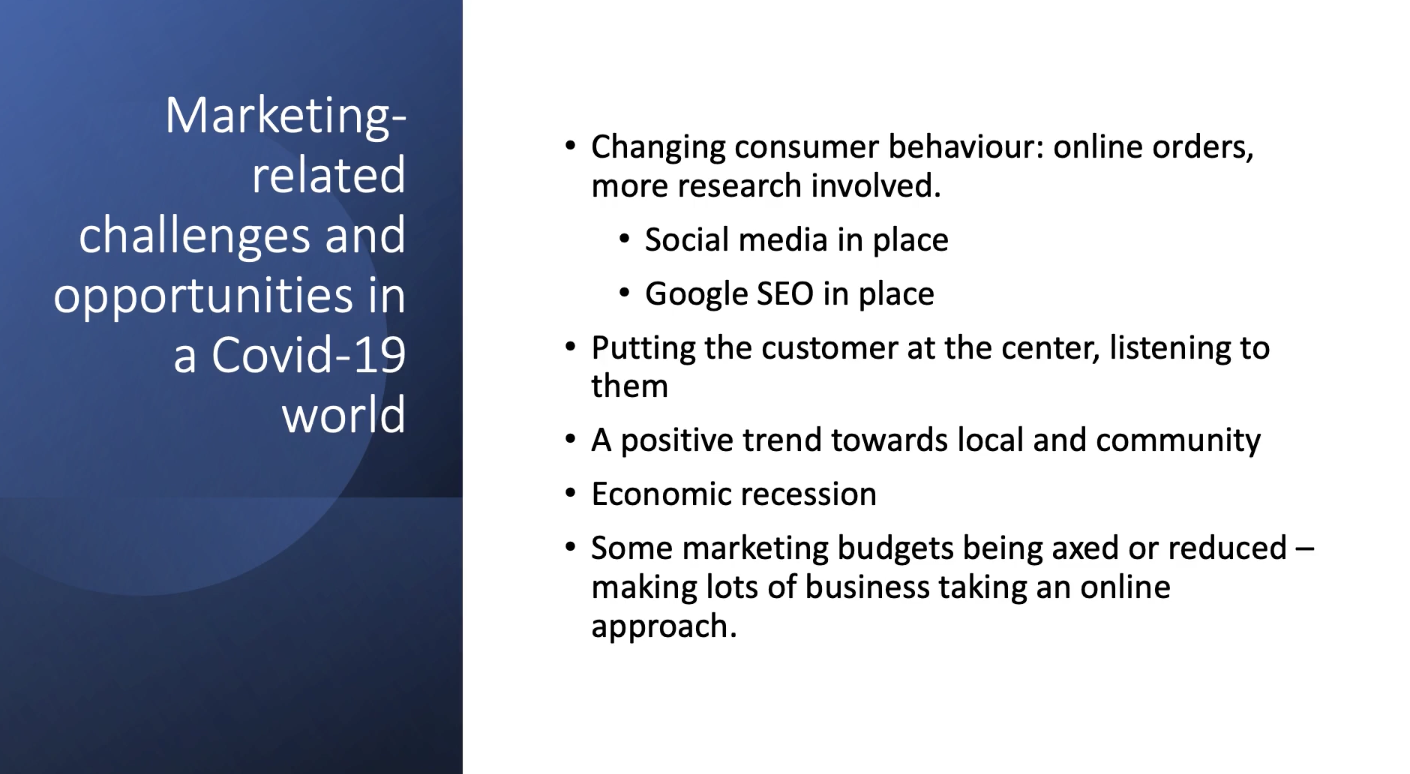
In the world after COVID-19, digital marketing has really changed the game, especially with how people behave when they shop and interact online. Since the pandemic started, more of us have turned to shopping online, using the internet for fun, and finding out what we need to know from the comfort of our homes. This change means that companies need to step-up their online game, making sure their websites and social media are easy to use and really engage with us as customer.
One big area that's gotten even more important is SEO, which stands for Search Engine Optimization. Basically, it's all about making sure a business' website pops up at the top when you search for something they offer.
Since everyone’s shopping online more, appearing at the top of search results can really help a business stand out. This is why you see many businesses paying more attention to SEO.
Social media has also become a key player. Now, it's not just about posting on Facebook or Instagram, but it's also about interacting with people. Companies are using these platforms to talk directly to customers, answer their questions quickly, and share content that customers find helpful or interesting. This helps build a strong relationship between the brand and the customer.
Content is another big thing. This means the stuff that companies put out there to attract and keep customers—like blogs, videos, and posts about things that matter to people today, such as health and family. Good content can draw people in and keep them coming back.
So, in this new post-COVID world, businesses are finding new ways to connect with us online, using SEO, social media, and great content. It’s all about meeting us where we spend a lot of our time and making sure we have a good experience when we interact with them online.
SOCIAL MEDIA USE IN 2024
There are 5.04 billion social media users at the start of 2024, equating to 62.3 percent of the world’s total population. Social media users have grown by 5.6 percent over the past year, with 266 million new users in 2023 equating to an average increase of 8.4 new users every single second.

Today's topic for our digital marketing class is going to delve into the recent trends in social media usage and what this means for us as marketers. So, grab a coffee, find a comfy spot, and let's get into the details!
Introduction to Recent Social Media Trends:
First off, even though the massive growth in social media usage we saw during the initial COVID-19 lockdowns has slowed down, the numbers are still quite impressive. In the last quarter of 2023, social media platforms saw a 1.5 percent increase in user numbers. That means about 75 million new users joined social media between October and December alone! To put that in perspective, that’s an average of 9.4 new users every single second during those months.
Continued Growth in 2023
This spike in growth during the final quarter suggests that the increase was actually higher than the overall average for the year. It shows that even post-pandemic, social media continues to be an essential part of people’s lives, evolving with new features and platforms drawing in users.
A Look into 2024 and beyond
From the research I've looked up, it seems this trend isn't slowing down into 2024. The continued rise in social media engagement is not just about more people signing up; it’s also about how much more these platforms are being integrated into daily life. Whether it's for shopping, connecting with friends, or following brands, users are logging in more frequently and staying online longer.
Social Media as a Dominant Online Activity:
Adding to this, recent studies, including insights from GWI, highlight that social media isn't just popular; it dominates online activities globally. Around 94.7 percent of internet users aged 16 to 64 engage with chat and messaging services monthly, making it the top online activity worldwide.
So, what does this mean for us in the field of digital marketing? The increasing user base and deepening engagement offer a rich ground for strategies focusing on social media marketing. Brands can look into targeting not just more users but also finding ways to make their engagements more meaningful.
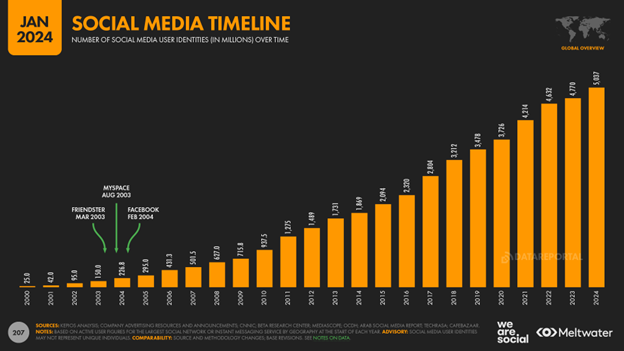
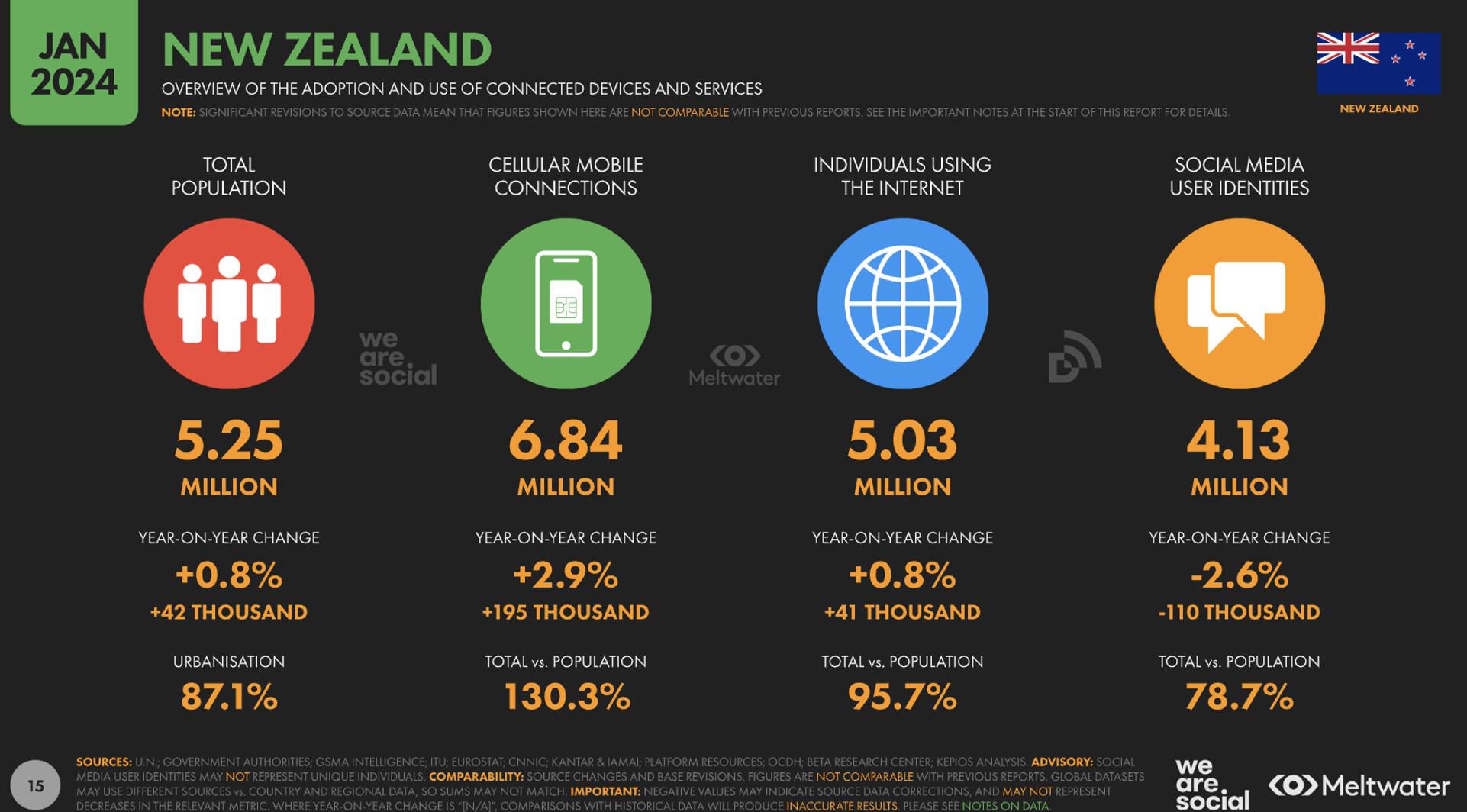
Internet Usage
- As of January 2024, New Zealand had 5.03 million internet users.
- The internet penetration rate was 95.7% of the population.
Social Media Usage
- There were 4.13 million social media users in New Zealand in January 2024.
- Social media users made up 78.7% of the total population.
Mobile Connections
- Total mobile connections stood at 6.84 million in early 2024.
- This is more than the total population at 130.3%, indicating some have multiple connections.
Population Insights
- New Zealand’s population was 5.25 million in January 2024.
- The population saw a growth of 42 thousand people from early 2023, a 0.8% increase.
- 50.4% of the population is female, while 49.6% is male.
- 87.1% of the population lived in urban areas.
Age Distribution
- The median age of the population is 37.1 years.
- Children aged 0-4 make up 6.1%, while 16.9% are aged 65 and above.
Social Media Specifics
- Social media usage slightly decreased by 110 thousand users from early 2023, a 2.6% drop.
- The majority of social media users are adults aged 18 and above, representing 87.4% of that age group.
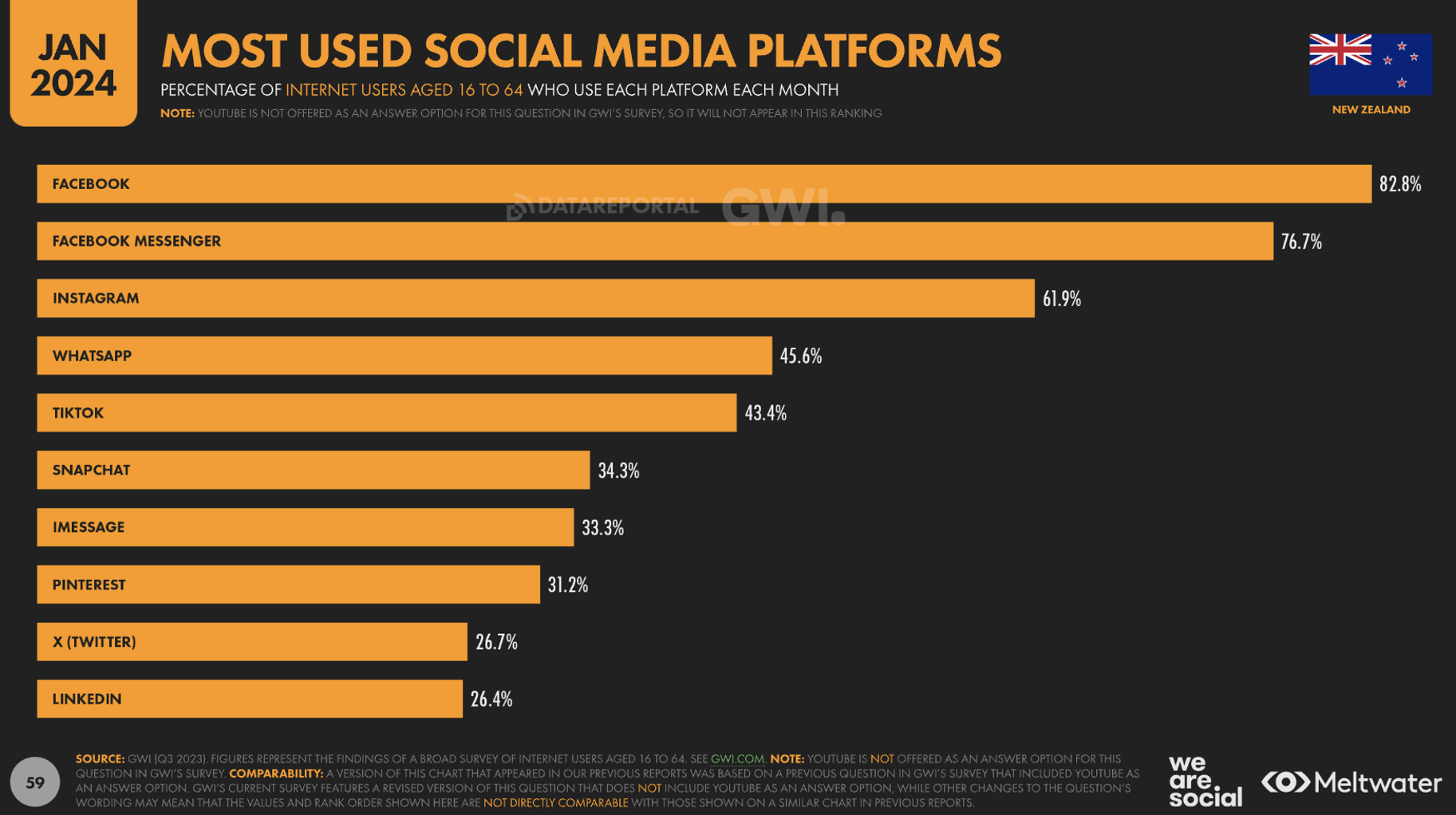
Platform-Specific Data
- Facebook: 3.30 million users with a notable increase in ad reach.
- YouTube and Instagram also showed robust user numbers and engagement.
- TikTok’s reach among adults was 47.2%.
- LinkedIn had 2.80 million registered members, with a growth in its user base.
Facebook and Instagram: Both platforms show significant usage with millions of users, and they continue to be essential for digital marketing efforts targeting diverse age groups.
YouTube: This platform remains a critical channel for video marketing, with its wide reach reflecting high engagement potential.
TikTok: Demonstrating growing popularity, particularly among adults, TikTok offers a platform for creative and visually engaging content.
LinkedIn: With 2.80 million members, LinkedIn is crucial for B2B marketing and professional networking.
This breakdown gives a clear picture of how deeply integrated digital technology and media are in New Zealand's daily life, and it's fascinating to see how these numbers will evolve and affect both personal and professional spheres.
In 2024, New Zealand's digital landscape continues to show robust growth and engagement across various platforms, illustrating how integral digital connectivity and media have become in both personal and professional spheres. Here's a comprehensive summary of the state of digital marketing in New Zealand based on the latest data:
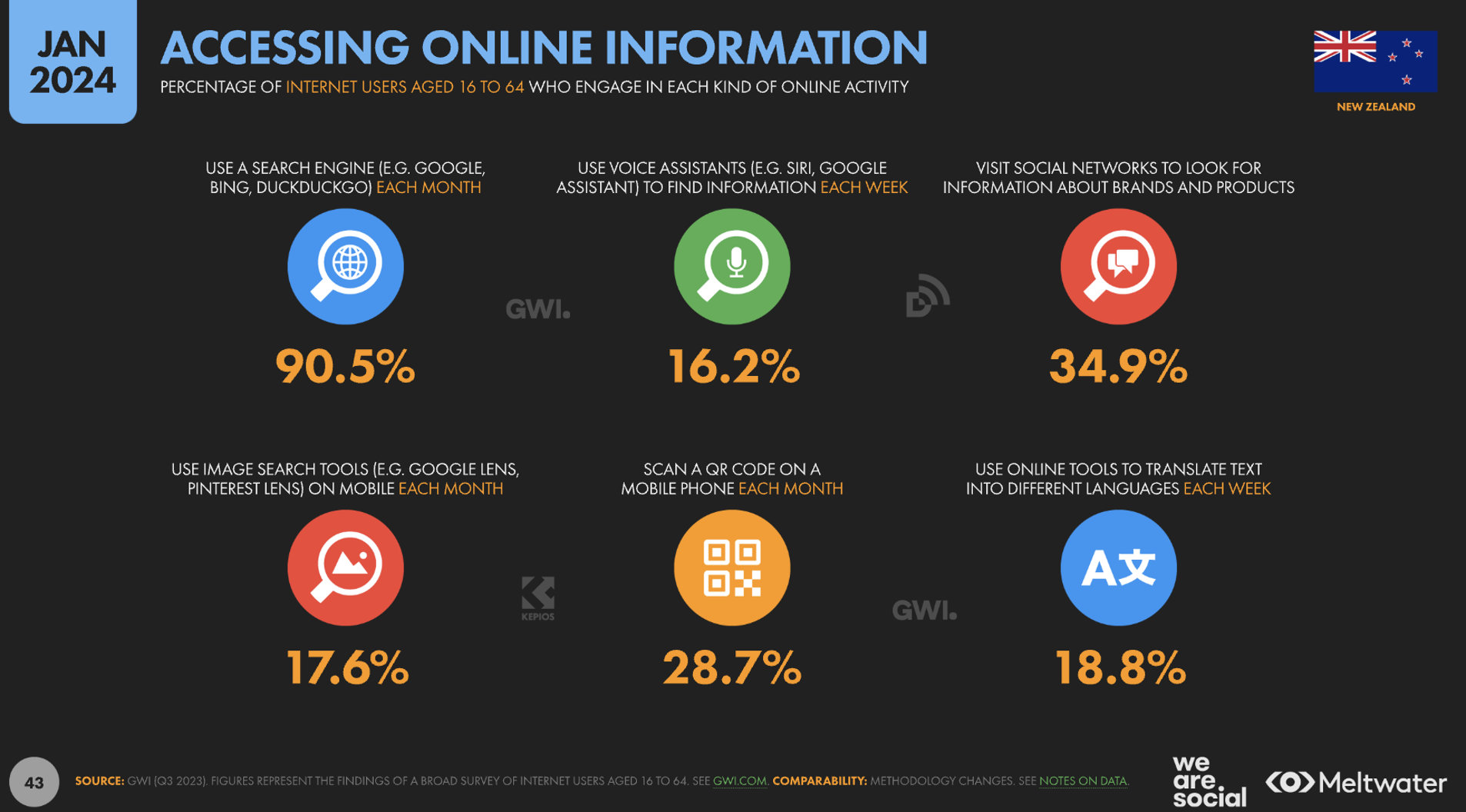
This data paints a picture of a highly connected New Zealand, where digital marketing strategies need to be dynamic and responsive to the preferences and behaviors of a tech-savvy population. Brands and marketers must focus on creating engaging, relevant, and personalized content that leverages high internet speeds and the widespread use of mobile devices.
As social media usage remains strong despite slight fluctuations, an integrated approach using multiple platforms will be key to reaching broader demographics effectively.
Furthermore, understanding the nuances of each platform’s audience can help in crafting targeted campaigns that are more likely to resonate and drive engagement.
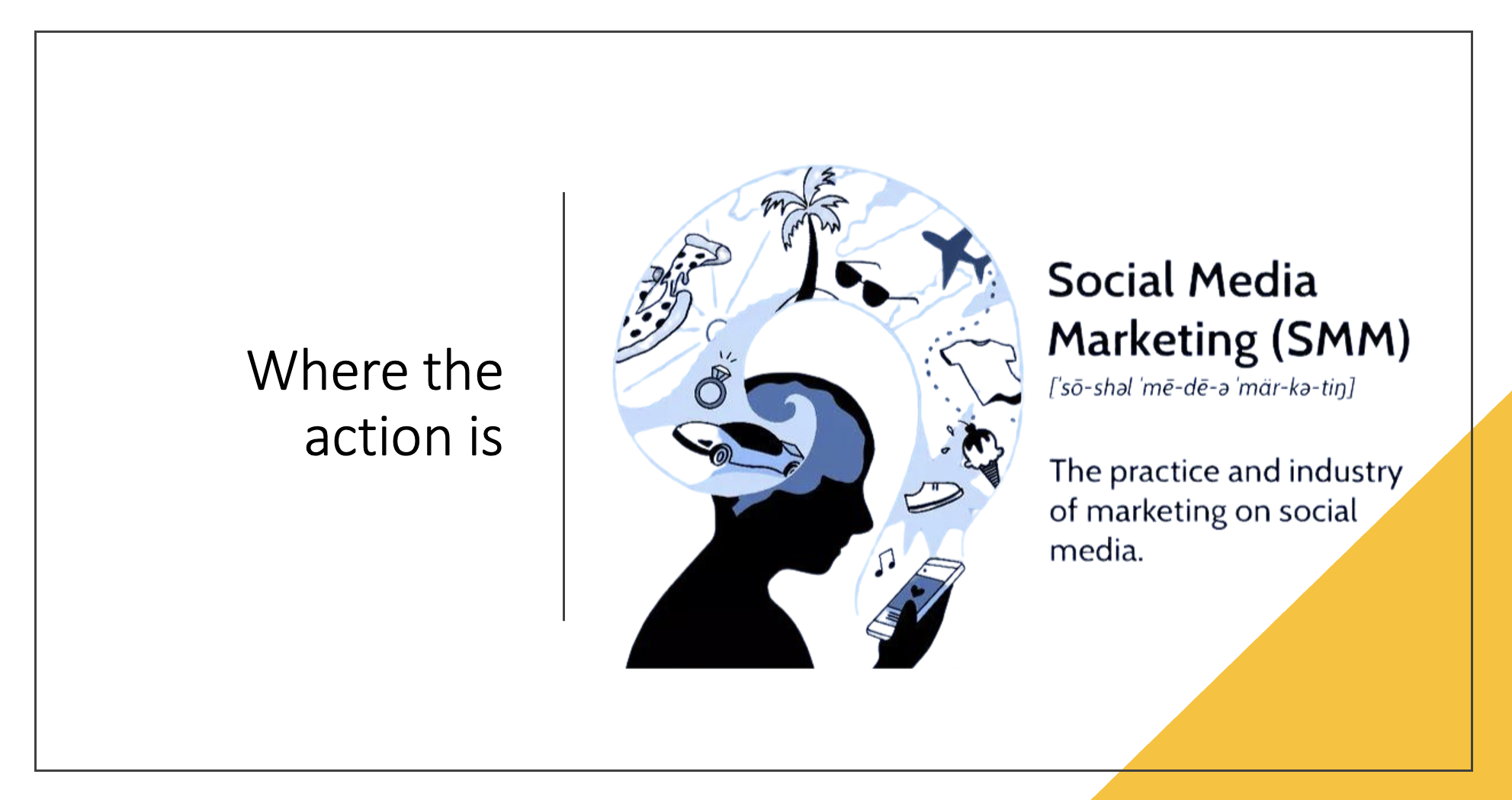
What Is Social Media Marketing (SMM)?
Social media marketing, also known as digital marketing or e-marketing, uses social media platforms where users create networks and share information. It helps companies build their brand, increase sales, and drive traffic to their websites. SMM allows companies to engage with current customers and reach new ones. It also provides data analytics to track the success of marketing efforts and find more ways to connect with customers.
From 2004, when MySpace became the first social media site to reach one million users, to 2022, social media has grown dramatically. It now rivals the reach of television and radio. By early 2023, there were 4.76 billion social media users worldwide, making up over 59% of the global population.
- Social media marketing uses platforms like Facebook, X (formerly Twitter), and Instagram to market products, engage with customers, and reach new audiences.
- The strength of social media marketing lies in its ability to connect, interact, and gather customer data.
- It has changed how businesses influence consumer behavior, from promoting engaging content to collecting personal data for targeted messaging.
- Because social media is so widespread, these marketing techniques are crucial for businesses.
- Social media marketing is often cost-effective and offers great exposure but requires ongoing maintenance and can sometimes lead to negative feedback.
Why Is Social Media Marketing (SMM) So Powerful?
The power of SMM comes from its unmatched ability to connect, interact, and collect customer data.
Connection
Social media allows businesses to connect with customers in ways that were not possible before. There are many ways to reach target audiences, including content platforms like YouTube, social sites like Facebook, and microblogging services like X.
First: Make a Thread
Before you can post your first practical activity, you'll need somewhere to post it to!
Head over to the Practicals Forum and start a new thread called "My Practicals".
Your thread in the Practicals Forum is where you'll post the results of the activities you complete throughout the course. Your tutor will keep an eye on your thread, provide feedback and answer any questions.
Practical 1
When you have your thread set up, it's time for your first practical activity:
- Choose a brand or a product you are familiar with
- Identify their Unique Selling Point (sometimes is related to the well-known slogan)
- What was your first impression of the USP?
Post your answer to your thread in the Practicals Forum.
Please include the title "Practical 1: Unique Selling Point" in your post.
Learning together: We learn better with a little encouragement and discussion. Check out the answers of other students and leave a comment on their posts too.
